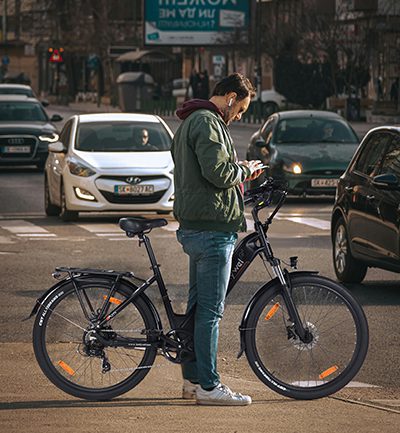Electric bikes (often referred to as e-fietsen) are becoming increasingly popular in the UK. They offer cyclists a convenient, affordable and environmentally friendly way to get around, and are particularly good for commuting, leisure and exercise. E-bikes are a hybrid between a traditional bicycle and an electric vehicle, combining pedal power and electric assistance to make cycling easier and more accessible to a wider range of people.
Despite their many benefits, the legality of e-bikes has raised questions, particularly in the UK, where there are regulations governing their use on public roads and paths. The UK government has created a series of regulations and categorisations to determine which e-bikes can be legally used on public roads and which can not. These regulations are designed to ensure the safety of riders, pedestrians and other road users, and to promote the use of sustainable modes of transport.
Understanding the legal landscape for e-bikes in the UK can be complex and confusing, but it is important to understand the rules and regulations to ensure safety and avoid legal issues. If you are considering purchasing an e-bike, it is recommended that you research the different classifications and regulations and ensure that your bike meets the legal requirements for use on public roads and trails.
Legal Classification:
In the UK, e-bikes are classified into three categories based on their power output and speed capabilities, each with a different legal meaning:
Electrically assisted bicycle (EAPC):
Electrically assisted bicycles, often referred to as e-bikes or e-bikes, have become increasingly popular in recent years due to the convenience they offer in terms of transport.
An EAPC is a legal e-bike if it meets certain criteria. These criteria include being equipped with pedals that can be used to drive the bike, an electric motor with a maximum output of 250 watts, and a maximum assisted speed of 15.5 mph (25 km/h).
EAPCs are considered conventional bicycles, which means they can be used on cycle paths and bicycles can be used anywhere else. This means that riders don’t need a licence, registration or insurance to drive an EAPC. They are a great alternative to traditional bikes as they provide an extra power source, making it easier for riders to climb hills and ride longer distances.
Twist and Go e-bikes:
E-bikes, also known as motorised bicycles, come in a variety of forms, each with their own regulations. For example, a spinning e-bike is equipped with a throttle that starts the engine without the rider having to step on the pedals.
Unlike an electric assisted bicycle (EAPC), which is less regulated, an e-bike must be registered, taxed and insured like a motorbike. In addition, the rider must have a valid driver’s licence and comply with motorbike helmet requirements.
To meet legal requirements, bikes must meet specific technical standards, including lighting and braking regulations, to ensure the safety of the rider and other road users.
Speed e-bikes:
S-Pedelecs, also known as Speed Pedelecs, are electric bicycles that provide pedal assist up to 28 mph (45 km/h). Unlike a standard Electrically Assisted Pedal Cycle (EAPC), S-Pedelecs are subject to the same regulations as mopeds or motorbikes.
This means they must be registered, taxed, insured and comply with motorbike helmet requirements. Riders must also hold a valid driver’s licence and motorbikes must meet specific technical standards.
It is important to note that S-Pedelecs offer a faster and more powerful riding experience than standard e-bikes, so riders must comply with regulations and safety guidelines to ensure a safe and enjoyable riding experience.
Illegal e-bikes:
Whilst the majority of e-bikes sold in the UK are compliant, illegal e-bikes have entered the market. These may include:
High-powered e-bikes:
Electric bikes, or e-bikes, are becoming increasingly popular for transport and recreation. However, it is important to note that not all e-bikes are legal to use on public roads and paths in the UK. If an e-bike has a motor that is more than 250 watts or is travelling at speeds in excess of 15.5 mph when not pedalling, it must not be used without meeting certain requirements.
Failure to comply with these requirements may result in legal consequences for the rider, such as a fine or even confiscation of the e-bike.
In addition, the use of these illegal e-bikes on public roads and paths may pose a safety risk to the rider, other road users and pedestrians, due to the fact that they are not permitted to use e-bikes on public roads and paths.


